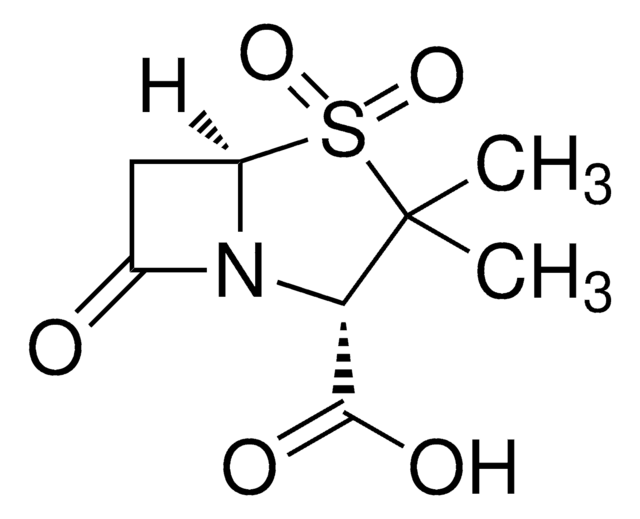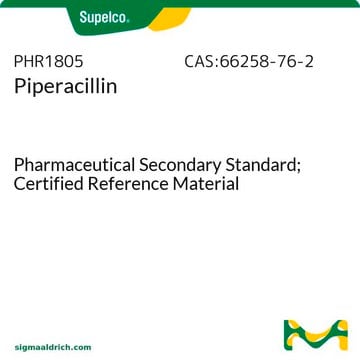PHR1113
L-lattato di sodio
Pharmaceutical Secondary Standard; Certified Reference Material
Sinonimo/i:
Acido L-lattico, Acido (S)-2-idrossipropionico, Acido sarcolattico
About This Item
Prodotti consigliati
Grado
certified reference material
pharmaceutical secondary standard
Livello qualitativo
agenzia
traceable to USP 1614308
Famiglia di API
sodium lactate
CdA
current certificate can be downloaded
tecniche
HPLC: suitable
gas chromatography (GC): suitable
Punto di fusione
163-165 °C (lit.)
applicazioni
cleaning products
cosmetics
food and beverages
personal care
pharmaceutical (small molecule)
Formato
neat
Temperatura di conservazione
2-8°C
Stringa SMILE
[Na+].C[C@H](O)C([O-])=O
InChI
1S/C3H6O3.Na/c1-2(4)3(5)6;/h2,4H,1H3,(H,5,6);/q;+1/p-1/t2-;/m0./s1
NGSFWBMYFKHRBD-DKWTVANSSA-M
Cerchi prodotti simili? Visita Guida al confronto tra prodotti
Descrizione generale
Applicazioni
Risultati analitici
Altre note
Nota a piè di pagina
Prodotti consigliati
Prodotti correlati
Codice della classe di stoccaggio
11 - Combustible Solids
Classe di pericolosità dell'acqua (WGK)
WGK 1
Punto d’infiammabilità (°F)
Not applicable
Punto d’infiammabilità (°C)
Not applicable
Choose from one of the most recent versions:
Possiedi già questo prodotto?
I documenti relativi ai prodotti acquistati recentemente sono disponibili nell’Archivio dei documenti.
I clienti hanno visto anche
Il team dei nostri ricercatori vanta grande esperienza in tutte le aree della ricerca quali Life Science, scienza dei materiali, sintesi chimica, cromatografia, discipline analitiche, ecc..
Contatta l'Assistenza Tecnica.













